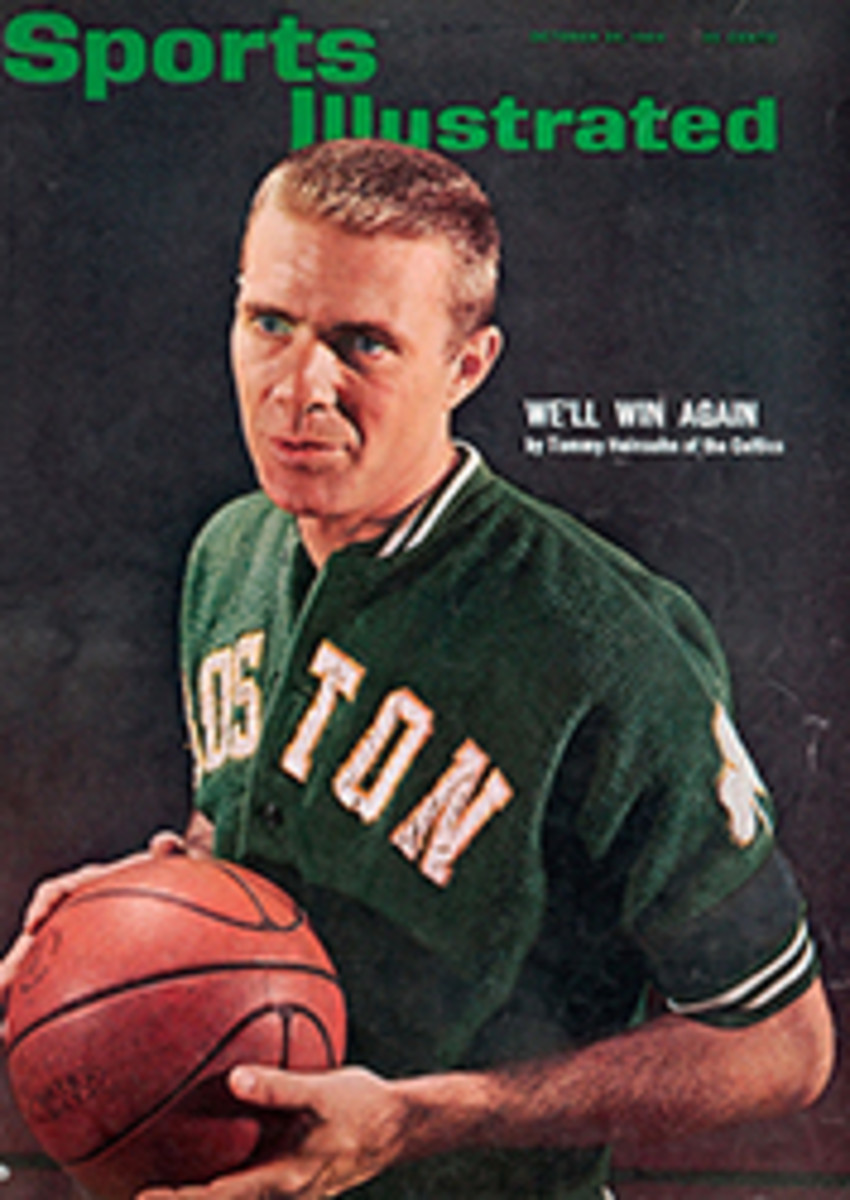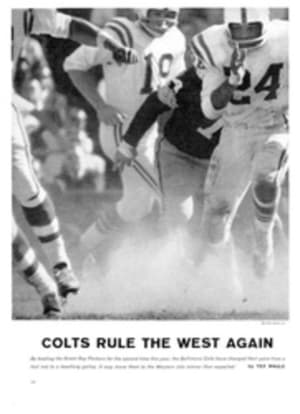
THE PACK CLOSES ON BOSTON
The Philadelphia 76ers still have the NBA's fastest pair of guards in Hal Greer and Larry Costello (keying a fast break, below). But their speed is wasted when Philadelphia's defensive rebounding fails, as it did so often last year. Two husky rookies are expected to correct this deficiency. Ira Harge and Lucious Jackson can stop rivals from getting those annoying second and third shots at the basket. Johnny Kerr is 32, has played in 754 straight games over 10 years and needs rest frequently; his pivot replacements are not adequate.
The New York knicks believe they have solved their perennial big-man problem with Willis Reed (19), rebounding here against Boston. Though it is doubtful that he can handle the Russells and Chamberlains, his presence—and that of Jim Barnes—does bring some long-needed power up front. Even if Art Heyman begins to fulfill his promise, the backcourt will need a consistent shooter; Heyman, Tom Gola, John Egan and Howie Komives can do everything else. At every position the scoring must pick up or the Knicks will be last in the East again.
The Baltimore bullets have a new coach, Buddy Jeannette, and hope to find a playmaker to set up their very strong front line. At left: Jeannette plans a workout with his two top candidates, Si Green and rookie Wally Jones. Though neither shoots well, starter Don Ohl does. This should be the most improved team in the league. The corners and pivot are a match for anyone, with Walt Bellamy, Bailey Howell, Gus Johnson and at least four strong subs.
The Boston celtics start the same five as last year but have lost four from the traditionally strong Boston bench. John Havlicek (shooting against the Knicks, opposite) will have to replace all of the missing four, and he is capable of doing it. Since there never was an adequate back-up man for Bill Russell, it matters little if tall rookie Mel Counts can—or cannot—do the job so long as Russell is not hurt. With him, this will always be the team to beat.
The Cincinnati Royals are excited by the evidence in preseason games that Jerry Lucas is becoming more offense-conscious. They won 12 of 14 exhibitions, Lucas, as usual, teaming superbly with Oscar Robertson. Below: he grabs a defensive rebound and flips to Oscar to start a fast break, a typical Royals maneuver. Adrian Smith is also showing increased offensive skill and will be a regular starter this year. Tops in scoring, Cincy is confident of taking the Celtics this time.
The Los Angeles lakers still lean heavily on the one-two punch of Elgin Baylor and Jerry West. Their best new men provide help where it seems least needed: even as good a playmaker as Walt Hazzard can only substitute for West, and a shooter like Cotton Nash cannot replace Dick Barnett. Up front, Rudy LaRusso is a strong rebounder and defender, but LeRoy Ellis is erratic. Darrall Imhoff may help Gene Wiley at the pivot, but neither is outstanding. Baylor's knees are a big question; he applied heat to them (right) every half time during exhibition games.
The Detroit pistons may have drafted the year's top rookie in strong, quick Joe Caldwell, but they needed every bit of help they could get. With Caldwell, Terry Dischinger, Rod Thorn, Ray Scott, Reggie Harding and Dave DeBusschere, this will be a young team, weak on defense and rebounding, but very fast. It will try a new, fast-break offense. Below: Thorn (10) and Dischinger lead a charge up court. Harding had no college experience and played only 39 games last season, but he soon may be a match for the NBA's top pivotmen.
The St. Louis hawks have the deepest and one of the best backcourts in the league: Richie Guerin, Len Wilkens, rookie Jeff Mullins, Chico Vaughn and John Barnhill. At the corners there is strength and size, with Bob Pettit, Cliff Hagan, Bill Bridges, Mike Farmer, Paul Silas and John Tresvant, but Hagan is still a spurt shooter and Pettit must start slowing down soon. The real problem, however, is the pivot; there is no one behind Zelmo Beaty, and Beaty (shooting above against the Pistons) has only been "promising" so far.
The San Francisco warriors have the biggest and one of the toughest front lines: Wilt Chamberlain (if he is well), Nate Thurmond, Wayne High-tower and Tom Meschery. They all can score and rebound, and Guy Rodgers is a fine playmaker. What the Warriors always have lacked is good outside shooting, to keep the defense from collapsing around Wilt, and they may have found it in rookies Barry Kramer and Bud Koper. In his first day of practice with the team, Koper (shooting below against the Lakers) hit 30 in a row.
NINE ILLUSTRATIONS
FRANK MULLINS

